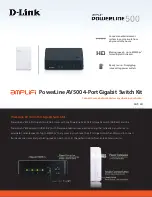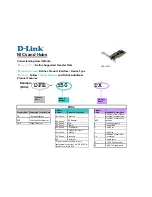
Introduction to the Newly Added Cluster Functions
387
Synchronizing User
Name and Password
User Name and Password Synchronization of Web users simplifies user configuration.
With this function employed, the configuration performed on the master device is
synchronized to all the member devices in the cluster. These configurations are mainly
used for WEB users to log into a cluster.
Configuration prerequisites
■
NDP and NTDP configurations are performed on the related cluster devices.
■
The cluster is created and enabled. That is, you can manage cluster members
through the master device.
Configuration procedure
Notes:
Perform the operations listed in Table 334 in cluster view on the master device. The
configuration can only be synchronized to the member devices in the white list only.
The configuration remains valid on a member device even if it quits the cluster or is
removed from the white list.
Configuration example
# Configure a web users.
[chwn_0.S4200G-cluster]
cluster-loca www password simple 12345678
Member 1 succeeded in the web-user configuration.
Member 2 succeeded in the web-user configuration.
Finish to synchronize the command.
# Display the current configuration on the master switch (Configuration
resulted from the command is reserved below).
[chwn_0.S4200G-cluster]
display current-configuration
#
local-user www
password simple 12345678
service-type telnet
level 2
#
cluster
ip-pool 168.192.0.1 255.255.255.0
build chwn
tftp-server 1.1.1.66
snmp-host 1.1.1.66
cluster-local-user www password simple 12345678
#
snmp-agent
snmp-agent local-engineid 800007DB000FE22405626877
snmp-agent sys-info version all
snmp-agent target-host trap address udp-domain 1.1.1.66 params
securityname clu
ster
undo snmp-agent trap enable standard
Table 334
Synchronize SNMP community name
Operation
Command
Description
Enter system view
system-view
-
Enter cluster view
cluster
-
Configure a Web user
cluster-local-user
username
passward
{
cipher
|
simple
}
passwardstring
Required
Summary of Contents for 3CR17660-91
Page 10: ...8 CONTENTS ...
Page 14: ...4 ABOUT THIS GUIDE ...
Page 46: ...32 CHAPTER 5 LOGGING IN THROUGH WEB BASED NETWORK MANAGEMENT SYSTEM ...
Page 48: ...34 CHAPTER 6 LOGGING IN THROUGH NMS ...
Page 60: ...46 CHAPTER 9 VLAN CONFIGURATION ...
Page 64: ...50 CHAPTER 10 MANAGEMENT VLAN CONFIGURATION ...
Page 80: ...66 CHAPTER 13 GVRP CONFIGURATION ...
Page 98: ...84 CHAPTER 15 LINK AGGREGATION CONFIGURATION ...
Page 112: ...98 CHAPTER 18 MAC ADDRESS TABLE MANAGEMENT ...
Page 126: ...112 CHAPTER 19 LOGGING IN THROUGH TELNET ...
Page 162: ...148 CHAPTER 20 MSTP CONFIGURATION ...
Page 274: ...260 CHAPTER 29 IGMP SNOOPING CONFIGURATION ...
Page 276: ...262 CHAPTER 30 ROUTING PORT JOIN TO MULTICAST GROUP CONFIGURATION ...
Page 298: ...284 CHAPTER 33 SNMP CONFIGURATION ...
Page 304: ...290 CHAPTER 34 RMON CONFIGURATION ...
Page 338: ...324 CHAPTER 36 SSH TERMINAL SERVICES ...
Page 356: ...342 CHAPTER 38 FTP AND TFTP CONFIGURATION ...
Page 365: ...Information Center Configuration Example 351 S4200G terminal logging ...
Page 366: ...352 CHAPTER 39 INFORMATION CENTER ...
Page 378: ...364 CHAPTER 40 BOOTROM AND HOST SOFTWARE LOADING ...
Page 384: ...370 CHAPTER 41 Basic System Configuration and Debugging ...
Page 388: ...374 CHAPTER 43 NETWORK CONNECTIVITY TEST ...
Page 406: ...392 CHAPTER 45 CONFIGURATION OF NEWLY ADDED CLUSTER FUNCTIONS ...
















































